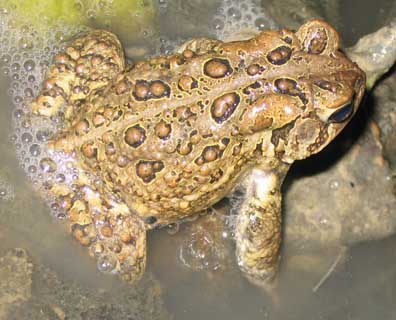 |
Do You Like American Toads? American Toad (Bufo americanus) males arrive on the mating grounds well ahead of females. They congregate in shallow wetlands, ponds, lakes and slow-moving streams. They then establish territories and begin calling for females. These amphibians produce a long trilling sound that lasts between 4 and 20 seconds. Click here to see an American Toad calling | ||||||||||
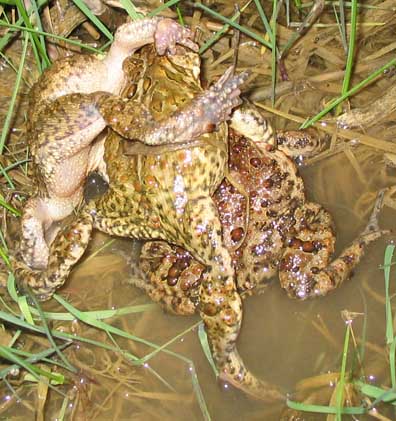 |
Triple Toads Since most females have not yet arrived on the scene, competition is fierce. These two males are battling over a female. Click here to see Mr. Maretka photographing a toad | ||||||||||
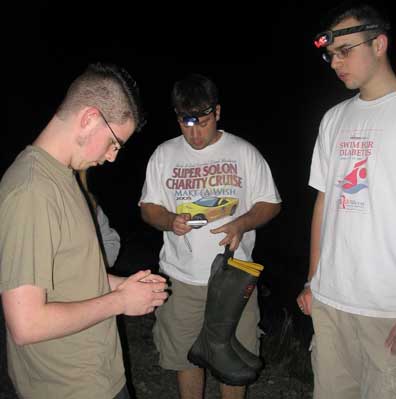 |
Frog Finders Several members of the Independence High School Biology Society joined us on our quest to find a Western Chorus Frog. 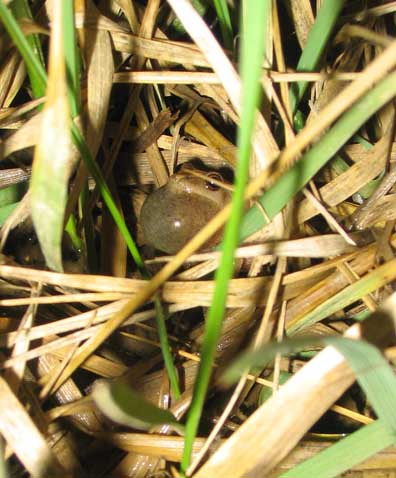 A Frog in the Grass
| There were numerous Spring Peepers (Pseudacris crucifer) calling, it was a warm night - the daytime temperatures were in the high 70s. 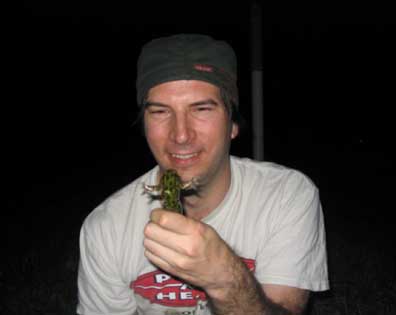 Unexpected Find
| Maybe I'm not as up on my frog calls as I should be, but it's a bit odd to hear a low, guttural grunting in the dark. I reckoned it was a swamp monster of some sort, but the culprit was actually this Leopard Frog (Rana pipiens). These frogs live in the narrow zone between water and grassland. They avoid predators by leaping 5 to 6 feet in a zig-zag pattern to avoid capture. Click here to see another photo  It's Not Easy Being Green
| It's much too early to be expecting to hear the banjo-like twang of the Green Frog's (Rana clamitans) call, but there were plenty of them hanging out. 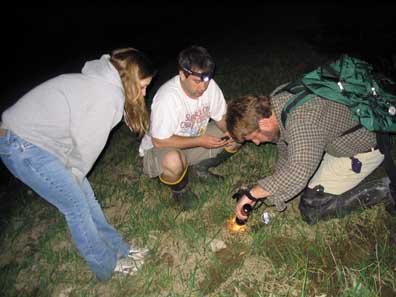 Kevin's Catch
| It was getting late and it did not seem likely we'd be able to locate a Western Chorus Frog. Then Kevin Wall, an Independence High School long-term substitute history teacher, came over with something in his hand. Click here to see a Western Chorus Frog 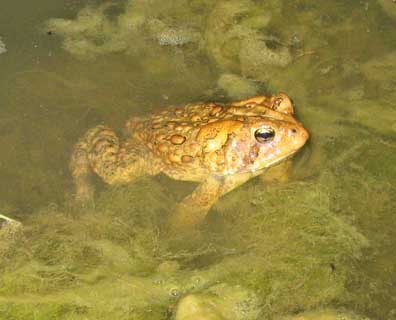 Amphibious Ending
| Five different species of frogs in one night? You bet! |
